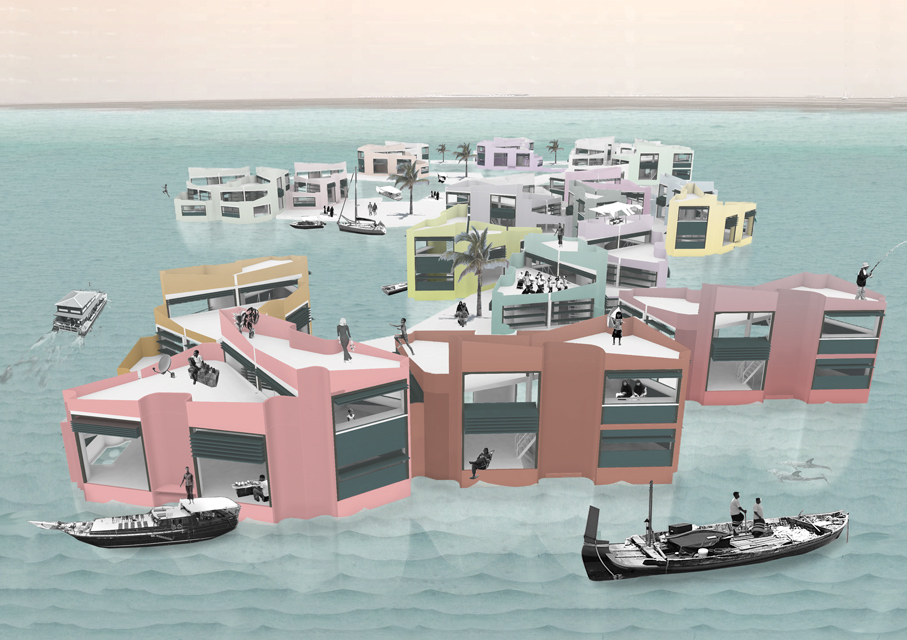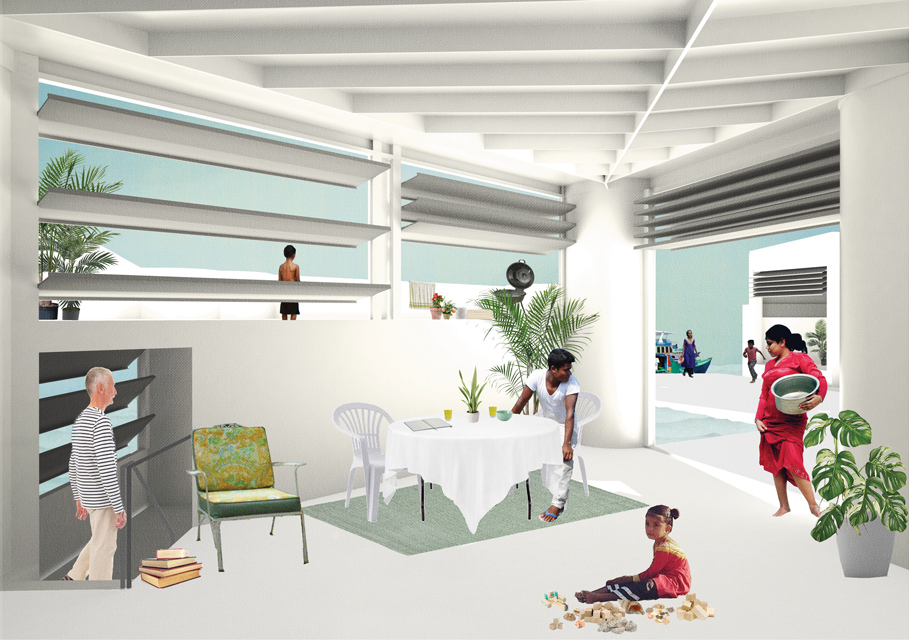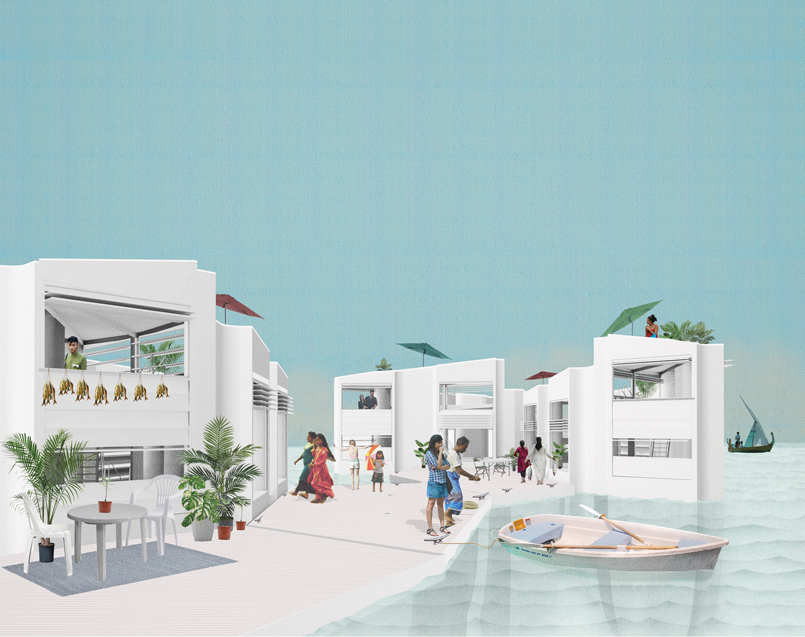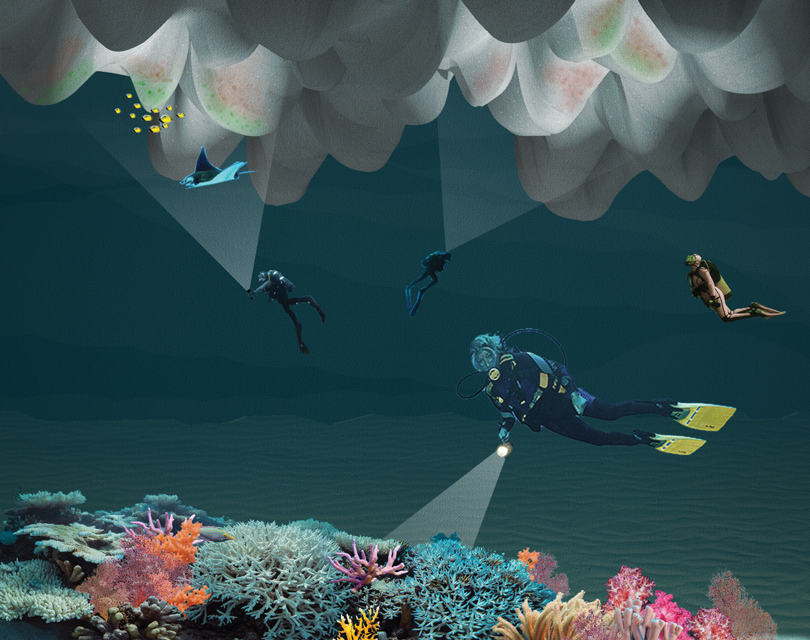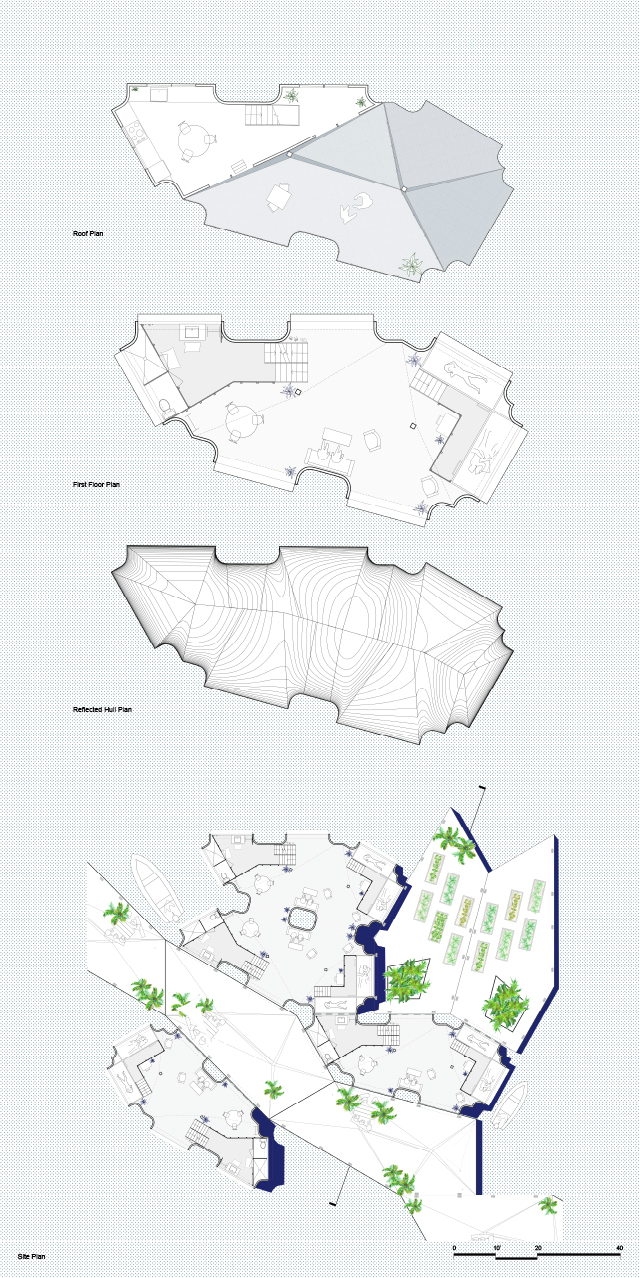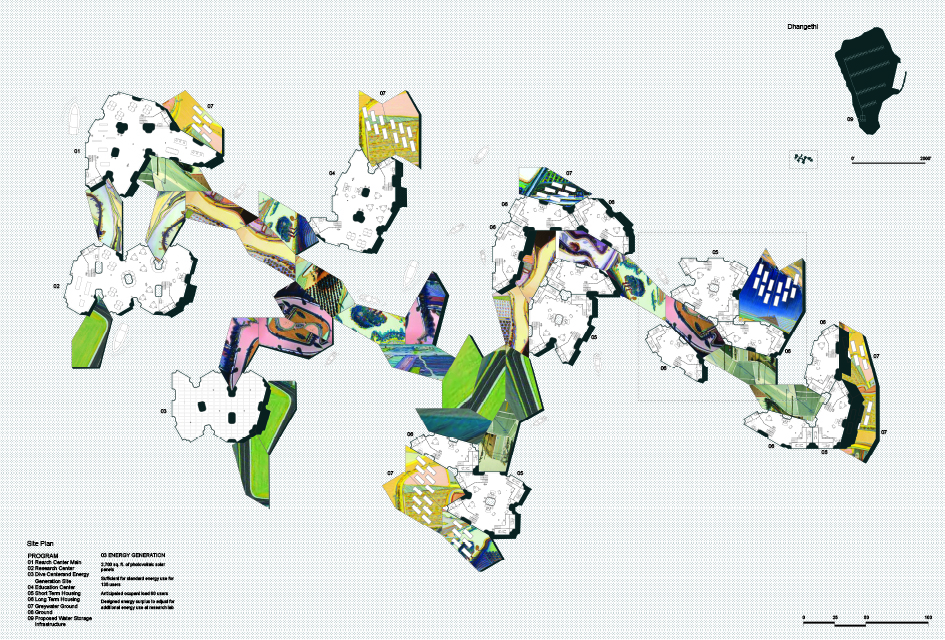Master of Architecture students Clare Hačko and Nicholas Scribner from the fall 2017 Buoyant Ecologies Maldives studio have been announced as winners of the AIA COTE Top Ten / Innovation 2030 Student Design Competition.
The American Institute of Architects Committee on the Environment (AIA COTE), in partnership with Association of Collegiate Schools of Architecture (ACSA), selected the recipients of the national awards. The competition recognizes ten exceptional studio projects that demonstrate designs moving towards carbon-neutral operation through creative and innovative integration of design strategies such as daylighting, passive heating and cooling, materials, water, energy generation, and sustainable systems. The program challenged students to submit projects that use a thoroughly integrated approach to architecture, natural systems, and technology to provide architectural solutions that protect and enhance the environment.
Jurors included Karin Bjorkman (Nola | Van Puersem Architects), Justin Brown, (MASS Design Group), Chris Chatto (ZGF Architects), Thomas Fisher (University of Minnesota), and Jeanne Gang & Juliane Wolf (Studio Gang).
The Buoyant Ecologies Maldives advanced Integrated Building Design studio, led by CCA faculty Margaret Ikeda, and Evan Jones, is part of an ongoing research partnership between CCA, Autodesk's Pier 9 Workshop, Kreysler & Associates, and the Benthic Lab at Moss Landing Marine Laboratories. The research is focused on developing innovative material approaches to resilient waterfront structures.
The selected project, Dis/Placement by Clare Hacko and Nicholas Scribner, proposes a floating community of fiber-reinforced polymer composite structures for the Maldives. The floating buildings integrate an innovative and dynamic bladder system that collects rainwater and provides ballast support for the structures. From the jury citation: "This interesting study brings attention to climate change and rising sea levels by imagining a floating community in the Maldives. The students understood how to work with a different ground planes and included an exploration of what it would be like if you could see a building from below. Above ocean the design is a simple modern style, while underwater “bladders” create ballast and an ocean microecosystem."

